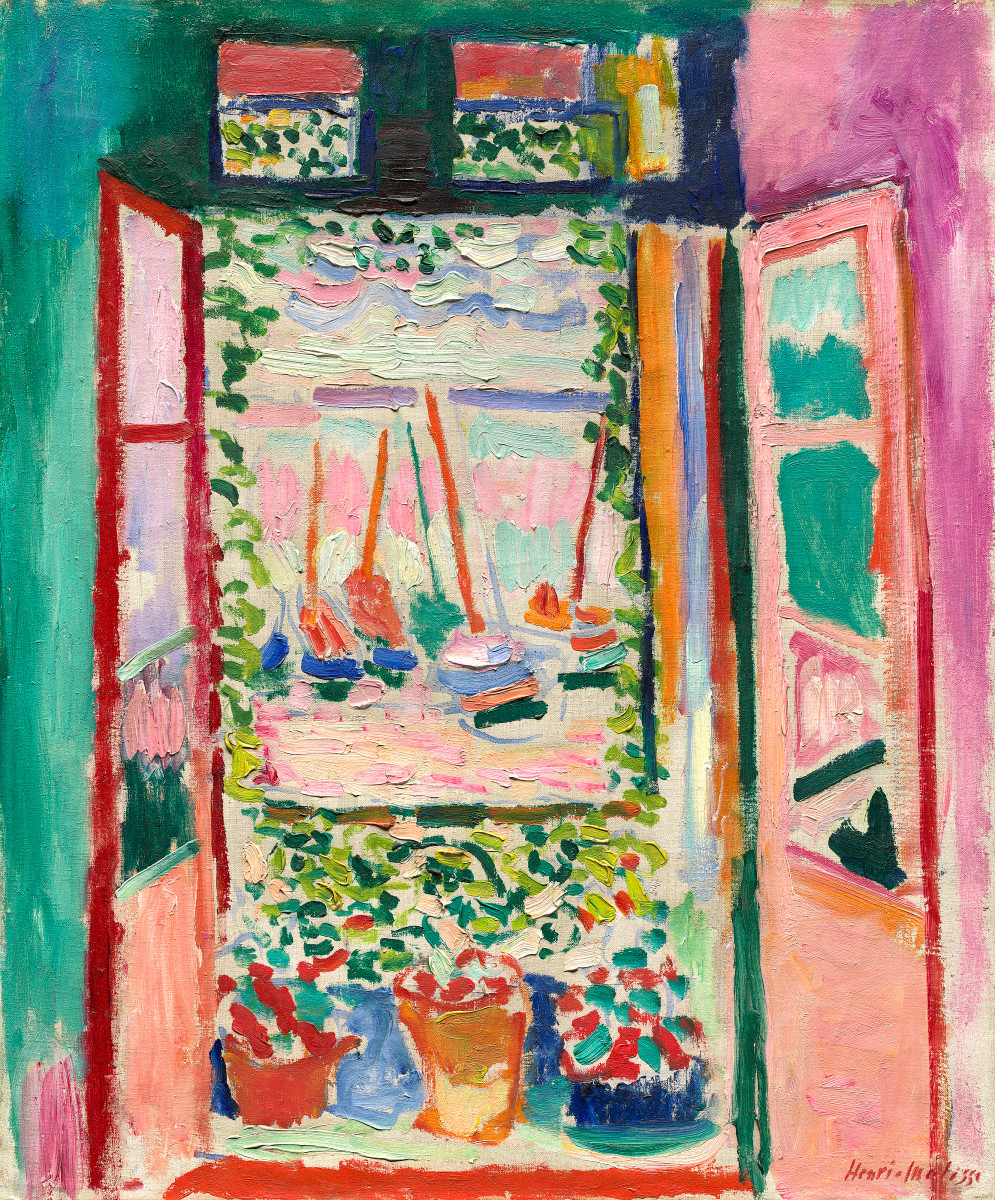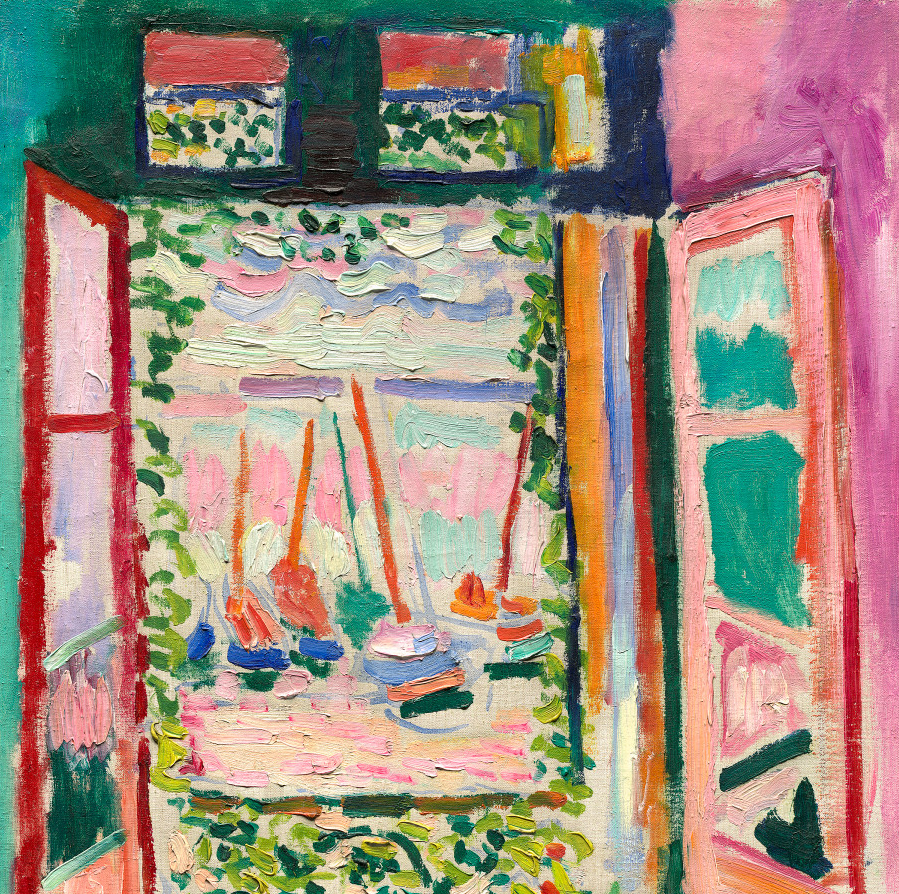Henri Matisse, Open Window, Collioure
In Henri Matisse’s Open Window, Collioure the casements of a large French window project toward us to reveal an explosion of brilliant Mediterranean color. The paint is applied very loosely; even in reproduction we can see almost every brushstroke.

An explosion of color
Although the style implies a rapid or even slipshod painting process, Open Window, Collioure was carefully orchestrated in every aspect, from the composition to the color relationships and the paint application. The window is placed slightly off center to the left, which gives the composition a casual feeling, in keeping with the slapdash quality of the brushstrokes. Underpinning this seeming casualness, however, is a calculated structure of repeating and nested rectangles that creates both a strong surface pattern and a series of internal “windows.”

Brilliant colors ricochet and echo across the canvas. Matisse uses complementary color contrasts throughout, setting off his glowing reds and pinks with cool greens. The walls are fuchsia and green, and the upper window panes of the casements reflect the opposing wall’s color, enhancing the intensity of the hues by contrast. A similar mutually intensifying contrast of colors appears where the vertical stripe of vivid orange paint, perhaps representing a curtain, is brushed next to the dark ultramarine strip of the window frame. Varied patterns of pale pink and turquoise brushstrokes represent sea and sky in the view out the window.
Denying the illusion of depth
Open Window, Collioure engages with, and ultimately undermines, the post-Renaissance conception of a painting being like a window. Matisse’s drawing of the window emphasizes its role as a framing device located in a three-dimensional space. The casements open inward, creating a perspectival view leading to the window opening. The balcony with flower pots on the floor is a shallow intermediate space between the room and the view of the harbor, which reaches to the horizon. However, all of these indications of spatial depth are negated by color and paint application, which emphasize the flat surface of the canvas and fail to create a convincing illusionistic scene. We never forget that we are looking at a painting and not out a window.

The expressive potential of color
In his 1908 “Notes of a Painter” Matisse wrote:
The entire arrangement of my picture is expressive . . .. Composition is the art of arranging in a decorative manner the diverse elements at the painter’s command to express his feelings. In a picture every part will . . . play its appointed role. . . . A work of art must be harmonious in its entirety. . . .
Henri Matisse, “Notes of a Painter,” [1908] trans. J. D. Flam, in Charles Harrison and Paul Wood, eds., Art in Theory 1900-2000 (London: Blackwell, 2003), pp. 70-71
Throughout his career Matisse was dedicated to the expressive potential of color: “My choice of colors is based on observation, on sensitivity, on felt experiences. . . . I simply try to put down colors which render my sensation . . . a moment comes when all the parts have found their definite relationships . . ..”[1]
Dr. Charles Cramer and Dr. Kim Grant, “Henri Matisse, Open Window, Collioure,” in Smarthistory, April 15, 2020, https://smarthistory.org/henri-matisse-open-window-collioure/
- Henri Matisse, “Notes of a Painter” [1908], trans. J. D. Flam, in Charles Harrison and Paul Wood, eds., Art in Theory 1900-2000, (London: Blackwell, 2003), pp. 70-71. ↵

